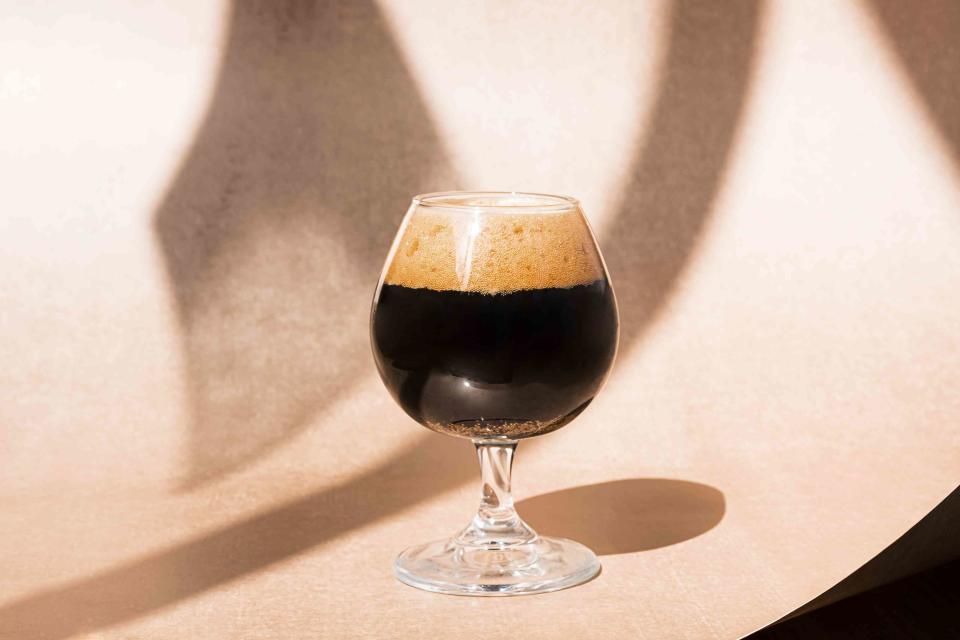How to Tell Porter and Stout Beers Apart
The two styles may be similar, but there are ways to tell these malt-forward beers apart.

Evgeniya Pavlova / Getty Images
Guinness is one of the most popular beers in the U.S., but it’s far from the only stout out there. There’s a whole world of subcategories within the style — oatmeal stouts, milk stouts, Irish stouts, American stouts, imperial stouts, and more.
But even with so much diversity within stouts themselves, they’re sometimes (okay, often) mixed up with porters. Both are malt-forward beer styles that range from medium-light to heavy-bodied, often contain toasty notes, and can offer a wide range of alcohol by volume (ABV). So how can you tell stouts apart from porters? Let’s break down what each is and isn’t to find out.
What is a stout beer?
The basic difference between a stout and a porter is that stouts tend to use unmalted roasted barley in the brewing process. But unless you’re standing in the brewhouse on brew day or you ask a brewer what ingredients they used, the average person isn’t going to know what type of barley is in the beer they’re drinking.
Generally, stouts are a bit bigger in both body and ABV than porters. (Of course, there are big exceptions to this guideline — the iconic stout Guinness is rather light-bodied and only 4.2% ABV.) Stouts also tend to play around a bit more with adjuncts, or ingredients beyond the standard malt, hops, yeast, and water. This leads to even more subcategories like pastry stouts, barrel-aged stouts, coffee stouts, and other big, bold interpretations that many craft beer drinkers tend to associate with the overall style.
Popular examples of stouts include Samuel Smith’s Oatmeal Stout, Bell’s Brewery Kalamazoo Stout, AleSmith Brewing Company Speedway Stout (and its many variants), Deschutes Obsidian Stout, Perennial Artisan Ales Abraxas Imperial Stout, Goose Island Bourbon County Stout, Left Hand Brewing Milk Stout, to name just a few. Domestic stouts tend to embrace a slightly more bitter malt profile than European stouts, which tend to finish a bit lighter and creamier.
What is a porter beer?
Porters actually originated before stouts, and were first created in England as a progression from English brown ales. Porters originally got their name because at the time, it was a popular beverage among dock workers, or “porters.” As the style eventually became fuller-bodied and bumped up the alcohol volume, the stronger, or “stouter” variations of these malty wonders became known as stouts.
Related: The 25 Most Important American Craft Beers Ever Brewed
There aren’t quite as many sub-styles of porters as there are stouts, but American porters, English porters, Baltic porters, and other robust interpretations all have carved out a place for themselves. Popular porters include Deschutes Black Butte Porter, Alaskan Brewing Company Smoked Porter, Ballast Point Victory at Sea Imperial Porter, Great Lakes Brewing Company Edmund Fitzgerald Porter, Sierra Nevada Porter, and Smuttynose Brewing Company Robust Porter.
American and English porters generally fall between medium-light to medium-full-bodied and from 4–6.5% ABV. Baltic porters, which are sometimes called Imperial porters, can go as high as 9.5% ABV with a full-bodied mouthfeel, but all porters share a similar smoothness and softness on the palate that makes them enjoyable and generally easy to drink. Stouts, on the other hand, can be bigger, bolder, and a bit brasher with flavors, ranging from dry to very sweet, depending on the adjuncts.
How to tell porter beers and stout beers apart
Neither style boasts a particularly hop-forward profile, with hops included only to act as a balance against the malty mouthfeel rather than as a flavoring agent. Both are complex and enjoyable, especially during winter months when dark beers just feel cozy.
Despite the two styles’ similarities, the easiest way to tell porters apart from stouts — other than by reading the label — is to remember that in general, porters are a bit lower in body and ABV and higher in drinkability, while stouts are a bit higher in mouthfeel, flavor, and ABV with a more aggressive personality. Think of them as the malty versions of pale ales versus double IPAs — siblings, but not twins.
Related: Do You Know the Difference Between Pilsners and Lagers?
Why are there more stout beers than porters?
In the U.S., porters peaked in popularity from the 1980s–2000s. At the time, beers like amber ales, wheat beers, brown ales, and hefeweizens were ubiquitous on tap lists, offering a respite from the sea of macro-brewed light lagers.
But as American drinkers’ tastes changed, so did the demand for more intense beers. IPAs got hoppier and hoppier. Easy-drinking porters and brown ales were set aside in favor of outrageously flavored gimmick brews that commanded long lines and guaranteed hangovers. Today, the race for the biggest, wackiest pastry stouts has slowed down from the mid-2000s to the early 2010s, but stouts still dominate as the dark beer of choice for many breweries. Some might even label what beers that should be consider porters as a stouts to attract more attention. But no matter whether it’s called a porter or a stout, if you like it, you can drink it.
For more Food & Wine news, make sure to sign up for our newsletter!
Read the original article on Food & Wine.

